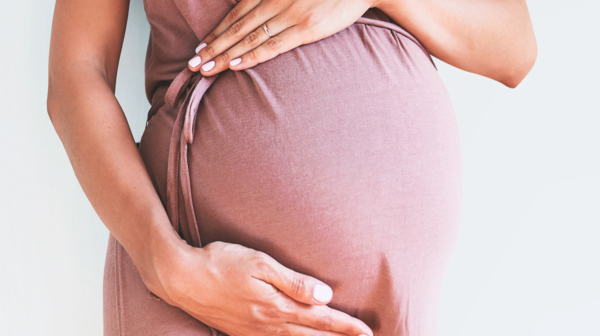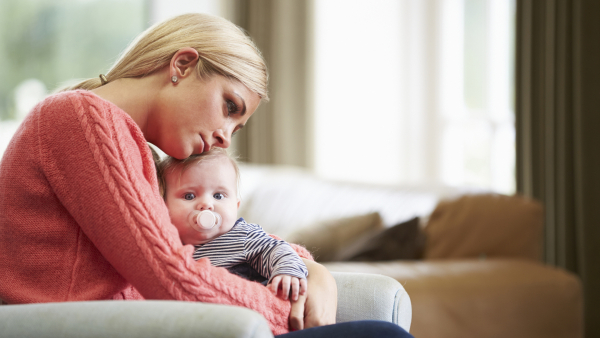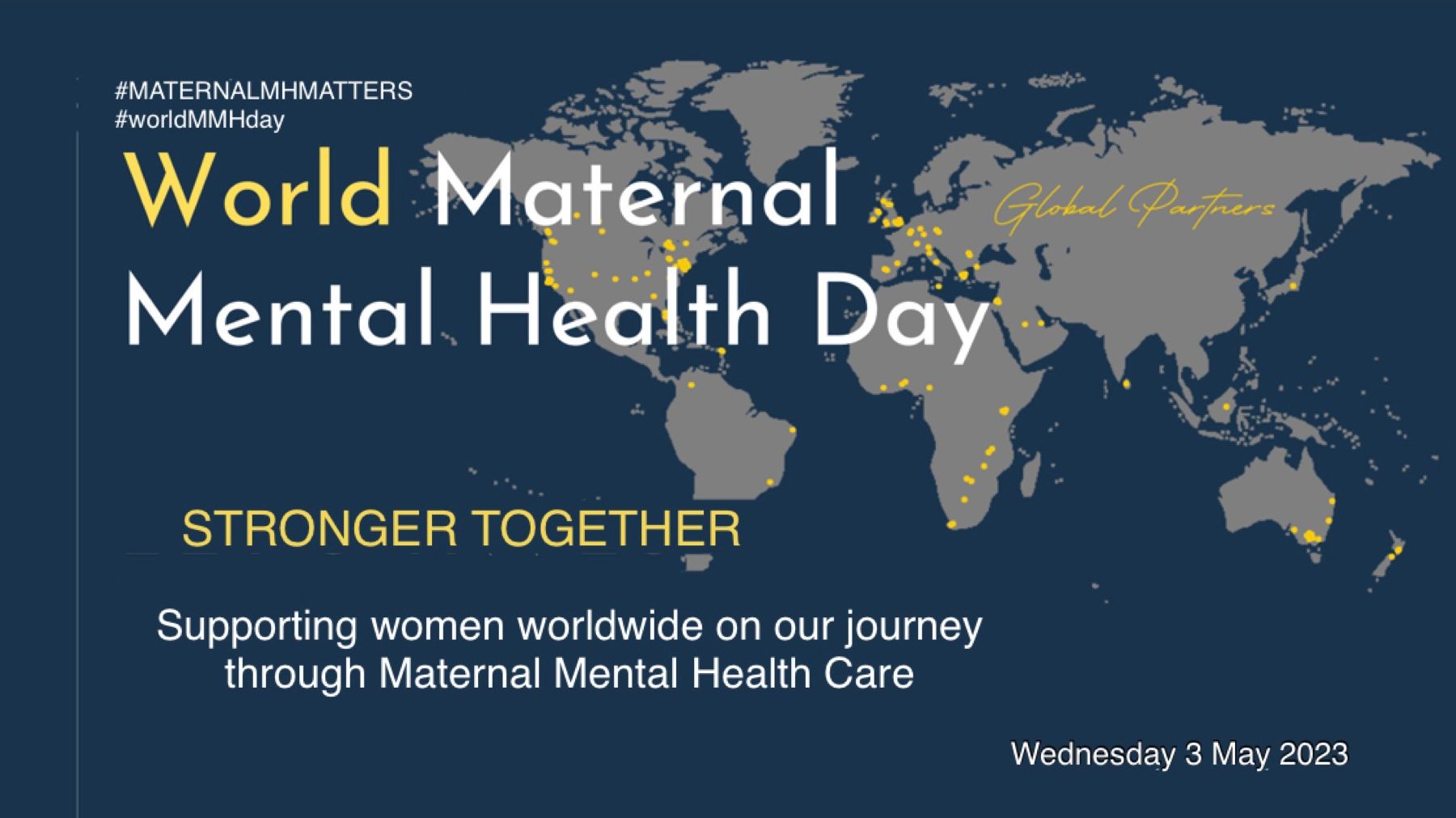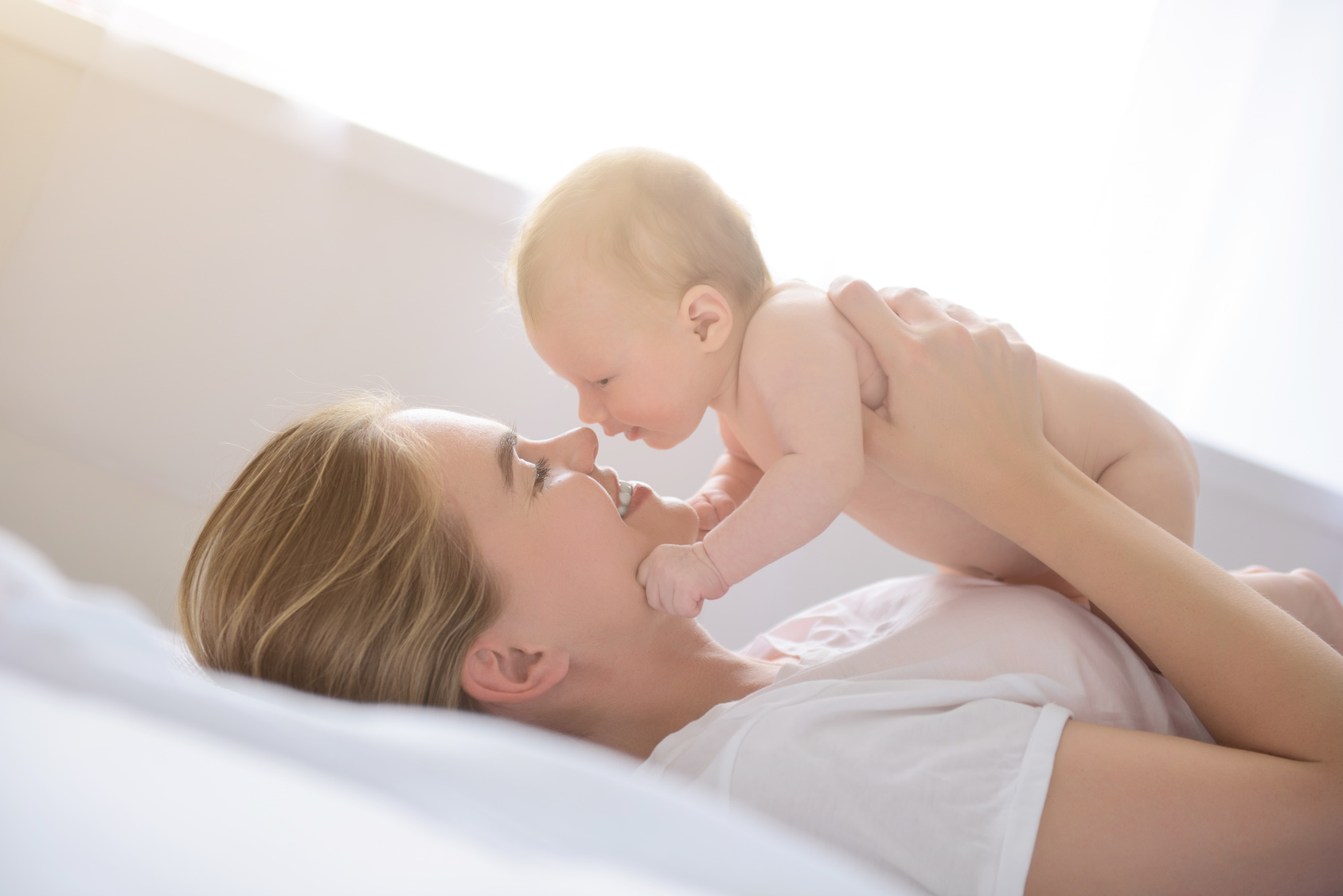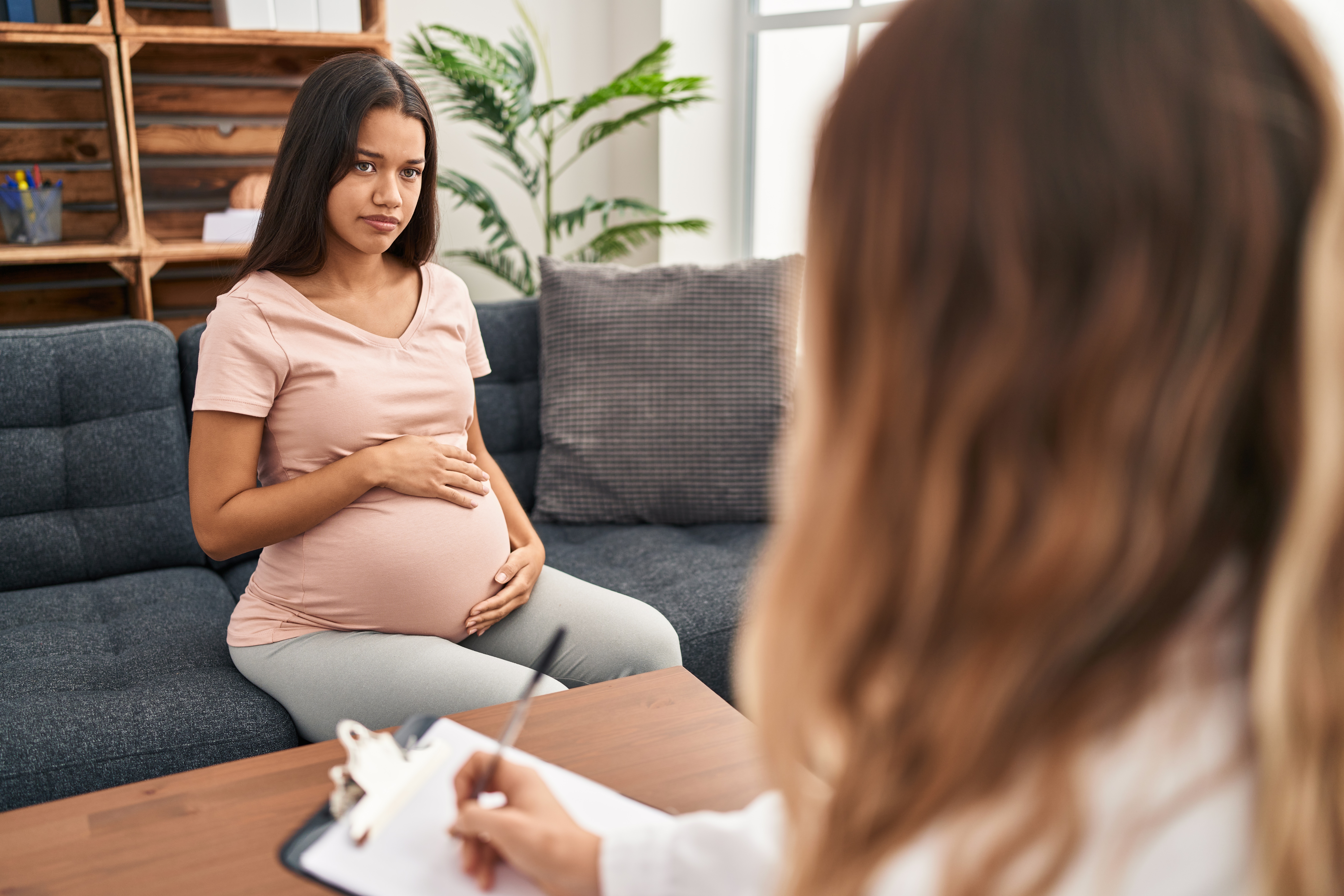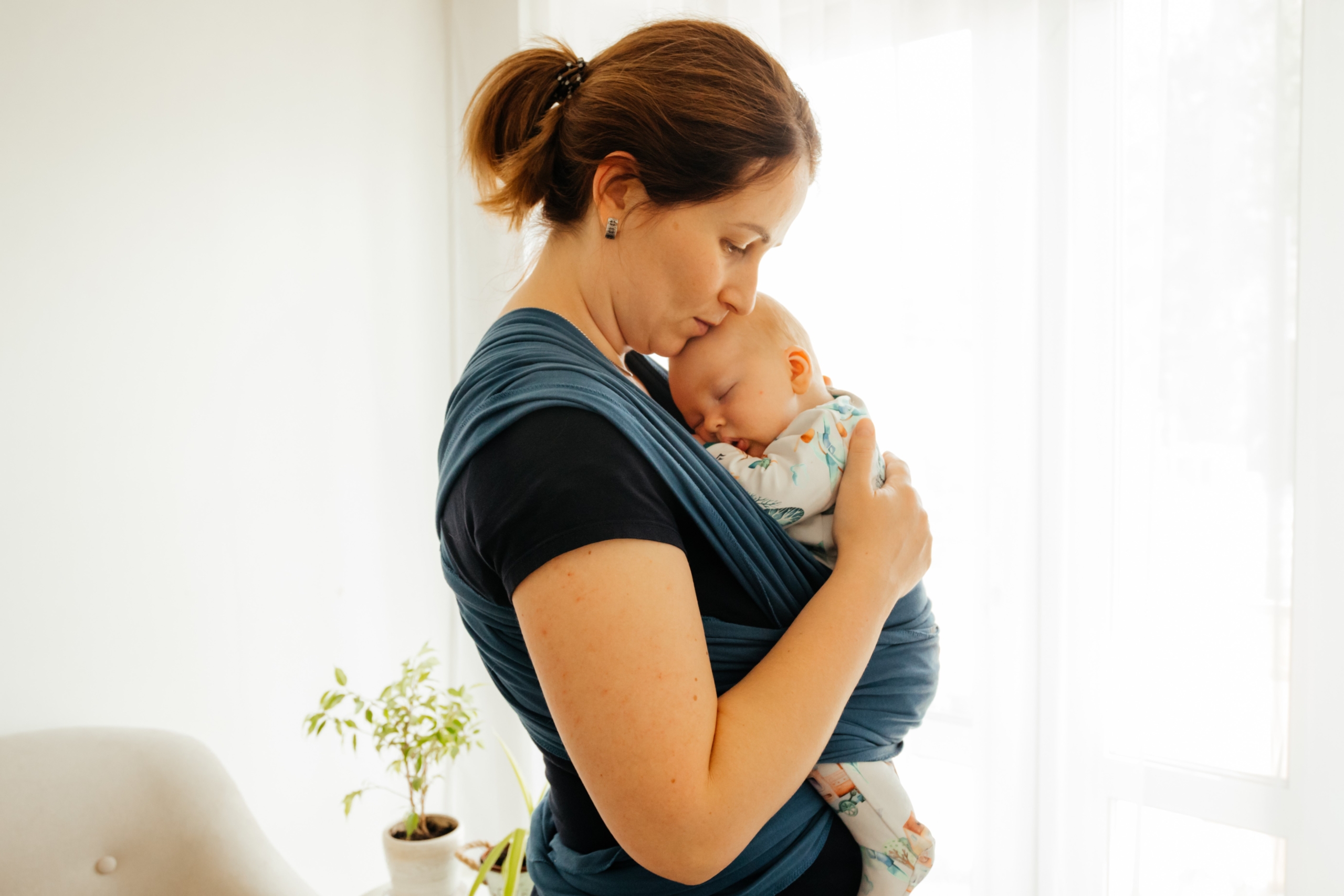General Information:
The Postpartum Period
During the postpartum period, about 85% of women experience some type of mood disturbance. For most the symptoms are mild and short-lived; however, 10 to 15% of women develop more significant symptoms of depression or anxiety. Postpartum psychiatric illness is typically divided into three categories: (1) postpartum blues (2) postpartum depression and (3) postpartum psychosis. It may be useful to conceptualize these disorders as existing along a continuum, where postpartum blues is the mildest and postpartum psychosis the most severe form of postpartum psychiatric illness.
Postpartum Blues
It appears that about 50 to 85% of women experience postpartum blues during the first few weeks after delivery. Given how common this type of mood disturbance is, it may be more accurate to consider the blues as a normal experience following childbirth rather than a psychiatric illness. Rather than feelings of sadness, women with the blues more commonly report mood lability, tearfulness, anxiety or irritability. These symptoms typically peak on the fourth or fifth day after delivery and may last for a few hours or a few days, remitting spontaneously within two weeks of delivery. While these symptoms are unpredictable and often unsettling, they do not interfere with a woman’s ability to function. No specific treatment is required; however, it should be noted that sometimes the blues heralds the development of a more significant mood disorder, particularly in women who have a history of depression. If symptoms of depression persist for longer than two weeks, the patient should be evaluated to rule out a more serious mood disorder.
Postpartum Depression
PPD typically emerges over the first two to three postpartum months but may occur at any point after delivery. Some women actually note the onset of milder depressive symptoms during pregnancy. Postpartum depression is clinically indistinguishable from depression occurring at other times during a woman’s life. The symptoms of postpartum depression include:
- Depressed or sad mood
- Tearfulness
- Loss of interest in usual activities
- Feelings of guilt
- Feelings of worthlessness or incompetence
- Fatigue
- Sleep disturbance
- Change in appetite
- Poor concentration
- Suicidal thoughts
Significant anxiety symptoms may also occur. Generalized anxiety is common, but some women also develop panic attacks or hypochondriasis. Postpartum obsessive-compulsive disorder has also been reported, where women report disturbing and intrusive thoughts of harming their infant. Especially with milder cases, it may be difficult to detect postpartum depression because many of the symptoms used to diagnose depression (i.e., sleep and appetite disturbance, fatigue) also occur in postpartum women in the absence of depression. The Edinburgh Postnatal Depression Scale is a 10-item questionnaire that may be used to identify women who have PPD. On this scale, a score of 12 or greater or an affirmative answer on question 10 (presence of suicidal thoughts) raise concern and indicate a need for more thorough evaluation.
Postpartum Psychosis
Postpartum psychosis is the most severe form of postpartum psychiatric illness. It is a rare event that occurs in approximately 1 to 2 per 1000 women after childbirth. Its presentation is often dramatic, with onset of symptoms as early as the first 48 to 72 hours after delivery. The majority of women with puerperal psychosis develop symptoms within the first two postpartum weeks.
It appears that in most cases, postpartum psychosis represents an episode of bipolar illness; the symptoms of puerperal psychosis most closely resemble those of a rapidly evolving manic (or mixed) episode. The earliest signs are restlessness, irritability, and insomnia. Women with this disorder exhibit a rapidly shifting depressed or elated mood, disorientation or confusion, and erratic or disorganized behavior. Delusional beliefs are common and often center on the infant. Auditory hallucinations that instruct the mother to harm herself or her infant may also occur. Risk for infanticide, as well as suicide, is significant in this population.
–
Depression and Obsessive Compulsive Symptoms During the Postpartum Period
Despite several studies which have begun to demonstrate that maternal anxiety during pregnancy can negatively affect offspring neurodevelopment, little attention has been given to postpartum maternal anxiety both by clinicians and researchers. This may be because of the clinical overlap between depression and anxiety symptoms. Routine postpartum screening generally includes assessing symptoms of depression but anxiety disorders are often masked. Educating clinicians about postpartum anxiety can be very helpful for patients.
Recent studies show pregnancy and childbirth are frequently associated with the onset of the Obsessive Compulsive Disorder (OCD), one type of anxiety disorder. Some women do not have OCD but are bothered by obsessive-compulsive symptoms.
Miller and colleagues aimed to shed light on postpartum depression and anxiety, with and without obsessions, in their two recent studies (Miller, Hoxha, Wisner, & Gossett, 2015a, 2015b).
A prospective cohort study of 461 women was performed to examine the phenomenology and the most common obsessive and compulsive symptoms present in postpartum women without a diagnosis of obsessive compulsive disorder (OCD). Of the 461 women included, 11.2% screened positive for OCD at 2 weeks postpartum, while 37.5% reported experiencing subclinical obsessions or compulsions. Both at 2 and 6 weeks, among the women who screened negative for OCD, the most commonly reported obsessions were aggression and contamination, and the most common compulsions were cleaning/washing, checking. Women with compulsions, with aggressive, religious and somatic obsessions and obsessions with symmetry were more likely to screen positive for OCD . Miller and colleagues’ data also showed that women with subclinical obsessions or compulsions were much more likely to be experiencing depression, as nearly 25% of these women also screened positive for depression.
In a secondary analysis of their prospective cohort study, Miller and colleagues examined the clinical course of postpartum anxiety and they confirmed the clinical overlap between postpartum anxiety and depression. A large number of women with postpartum depression had anxiety symptoms and obsessive-compulsive symptoms in the immediate postpartum period. At 2 weeks postpartum 19.9% of women with depression were more likely to experience comorbid state-trait anxiety, compared to 1.3% women who screened negative for depression. At both at 2 and 6 weeks postpartum, women with depression were more likely to report obsessions and compulsions compared to women without depression. While state-trait anxiety symptoms tended to resolve with time, obsessive-compulsive symptoms persisted. By 6 months postpartum, there were no differences in anxiety symptoms in women with and without depression, but the difference in obsessive-compulsive symptoms persisted (p=0.017). All this means severe distress for women and therapeutic implications for clinicians.
Given the potential adverse effects of untreated mood and anxiety symptoms on both the mother and child, careful screening and early recognition of anxiety symptoms during the postpartum period is recommended.
What Causes Postpartum Depression?
The postpartum period is characterized by a rapid shift in the hormonal environment. Within the first 48 hours after delivery, estrogen and progesterone concentrations fall dramatically. As these gonadal steroids modulate neurotransmitter systems involved in the regulation of mood, many investigators have proposed a role for these hormonal shirts in the emergence of postpartum affective illness. While it appears that there is no consistent correlation between serum levels of estrogen, progesterone, cortisol, or thyroid hormones and the occurrence of postpartum mood disturbance, some investigators hypothesize that there is a subgroup of women who are particularly sensitive to the hormonal changes that take place after delivery. This population of women may be more vulnerable to PPD and to other hormonally driven mood disturbances, such as those occurring during the premenstrual phase of the menstrual cycle or during the perimenopause.
Other factors may play a role in the etiology of PPD. One of the most consistent findings is that among women who report marital dissatisfaction and/or inadequate social supports, postpartum depressive illness is more common. Several investigators have also demonstrated that stressful life events occurring either during pregnancy or near the time of delivery appear to increase the likelihood of postpartum depression.
While all of these factors may act together to cause PPD, the emergence of this disorder probably reflects an underlying vulnerability to affective illness. Women with histories of major depression or bipolar disorder are more vulnerable to PPD, and women who develop PPD will often go on to have recurrent episodes of depression unrelated to pregnancy or childbirth.
Who is at Risk for Postpartum Depression?
All women are vulnerable to postpartum depression, regardless of age, marital status, education level, or socioeconomic status. While it is impossible to predict who will develop PPD, certain risk factors for PPD have been identified, including:
- Previous episode of PPD
- Depression during pregnancy
- History of depression or bipolar disorder
- Recent stressful life events
- Inadequate social supports
- Marital problem
Click here to read a 2005 blog post on risk factors for PPD.
Click here to read about obesity linked to postpartum risk.
Treatment for Postpartum Illness
Postpartum depression presents along a continuum, and the type of treatment selected is based on the severity and type of symptoms present. However, before initiating psychiatric treatment, medical causes for mood disturbance (e.g., thyroid dysfunction, anemia) must be excluded. Initial evaluation should include a thorough history, physical examination, and routine laboratory tests.
Non-pharmacological therapies are useful in the treatment of postpartum depression. In a randomized study it was demonstrated that short-term cognitive-behavioral therapy (CBT) was as effective as treatment with fluoxetine in women with postpartum depression. Interpersonal therapy (IPT) has also been shown to be effective for the treatment of women with mild to moderate postpartum depression. Not only is IPT effective for treating the symptoms of depression, women who receive IPT also benefit from significant improvements in the quality of their interpersonal relationships. Read this 2004 blog post and this 2007 post to learn more about CBT as a treatment option.
These non-pharmacological interventions may be particularly attractive to those patients who are reluctant to use psychotropic medications (e.g., women who are breast-feeding) or for patients with milder forms of depressive illness. Women with more severe postpartum depression may choose to receive pharmacological treatment, either in addition to or instead of these non-pharmacological therapies.
To date, only a few studies have systematically assessed the pharmacological treatment of postpartum depression. Conventional antidepressant medications (fluoxetine, sertraline, fluvoxamine, and venlafaxine) have shown efficacy in the treatment of postpartum depression. In all of these studies, standard antidepressant doses were effective and well tolerated. The choice of an antidepressant should be guided by the patient’s prior response to antidepressant medication and a given medication’s side effect profile. Specific serotonin reuptake inhibitors (SSRIs) are ideal first-line agents, as they are anxiolytic, non-sedating, and well tolerated. For women who cannot tolerate SSRIs, bupropion (Wellbutrin) may be an alternative; although one pilot study suggests bupropion may not be as effective as SSRIs. Tricyclic antidepressants (TCAs) are frequently used and, because they tend to be more sedating, may be more appropriate for women who present with prominent sleep disturbance. Given the prevalence of anxiety symptoms in this population, adjunctive use of a benzodiazepine (e.g., clonazepam, lorazepam) may be very helpful.
Puerperal psychosis is considered a psychiatric emergency that typically requires inpatient treatment. Acute treatment with either typical or atypical anti-psychotic medications is indicated. Given the well-established relationship between puerperal psychosis and bipolar disorder, postpartum psychosis should be treated as an affective psychosis and a mood stabilizer is indicated. Electroconvulsive therapy (ECT) is well tolerated and rapidly effective for severe postpartum depression and psychosis.
Using Medications While Breastfeeding
The nutritional, immunologic and psychological benefits of breastfeeding have been well documented. Women who plan to breastfeed must be informed that all psychotropic medications, including antidepressants, are secreted into the breast milk. Concentrations in the breast milk appear to vary widely. The amount of medication to which an infant is exposed depends on several factors, including dosage of medication, rate of maternal drug metabolism, and frequency and timing of feedings (Llewelyn and Stowe).
Over the past five years, data have accumulated regarding the use of various antidepressants during breastfeeding (reviewed in Newport et al 2002). Available data on the tricyclic antidepressants, fluoxetine, paroxetine, and sertraline during breastfeeding have been encouraging and suggest that significant complications related to neonatal exposure to psychotropic drugs in breast milk appear to be rare. While less information is available on other antidepressants, there have been no reports of serious adverse events related to exposure to these medications.
For women with bipolar disorder, breastfeeding may be more problematic. First is the concern that on-demand breastfeeding may significantly disrupt the mother’s sleep and thus may increase her vulnerability to relapse during the acute postpartum period. Second, there have been reports of toxicity in nursing infants related to exposure to various mood stabilizers, including lithium and carbamazepine, in breast milk. Lithium is excreted at high levels in the mother’s milk, and infant serum levels are relatively high, about one-third to one-half of the mother’s serum levels, increasing the risk of neonatal toxicity. Exposure to carbamazepine and valproic acid in the breast milk has been associated with hepatotoxicity in the nursing infant.
Learn more in our Breastfeeding and Psychiatric Medication specialty area.
How to Prevent PPD
Although it is difficult to reliably predict which women in the general population will experience postpartum mood disturbance, it is possible to identify certain subgroups of women (i.e., women with a history of mood disorder) who are more vulnerable to postpartum affective illness. Current research indicates that prophylactic interventions may be instituted near or at the time of delivery to decrease the risk of postpartum illness. Several studies demonstrate that women with histories of bipolar disorder or puerperal psychosis benefit from prophylactic treatment with lithium instituted either prior to delivery (at 36 weeks gestation) or no later than the first 48 hours postpartum. For women with histories of postpartum depression, several studies have described a beneficial effect of prophylactic antidepressant (either TCAs or SSRIs) administered after delivery. Patients with postpartum psychiatric illness are offered a variety of services by clinicians with particular expertise in this area:
- Clinical evaluation for postpartum mood and anxiety disorders
- Medication management
- Consultation regarding breastfeeding and psychotropic medications
- Recommendations regarding non-pharmacological treatments
- Referral to support services within the community
Click here to read a blog post on the prevention of PPD.
For the latest information on postpartum psychiatric disorders, please visit our blog.
How do I get an appointment?
Consultations regarding treatment options can be scheduled by calling our intake coordinator at 617-724-7792.
If you are pregnant or planning pregnancy, you may be interested in enrolling in the National Pregnancy Registry. You may find more information on this registry here. To view the list of our other active studies please visit our research page.
References:
Miller ES, Hoxha D, Wisner KL, Gossett DR.The impact of perinatal depression on the evolution of anxiety and obsessive-compulsive symptoms. Arch Womens Ment Health. 2015
Miller ES, Hoxha D, Wisner KL, Gossett DR. Obsessions and compulsions in postpartum women without obsessive compulsive disorder. J Womens Health (Larchmt). 2015
PARTICIPATE IN RELATED RESEARCH
All pregnant women between the ages of 18-45 with a history of psychiatric illness are eligible to enroll in the registry.
Recruiting individuals who have experienced a psychotic episode within 6 months of a live birth, still birth, or Intrauterine Fetal Death that occurred within the past 10 years
Are you pregnant? Do you own a smart phone? Get the MGH Perinatal Depression Scale app.
RECENT RELATED POSTS
Maternal Mental Health Awareness Week: May 1-7, 2024
May 1, 2024 is World Maternal Mental Health Day, coming together to increase awareness of perinatal mood and anxiety disorders.
Allison Baker, MD on the Specialized Care of Pregnant and Postpartum Women with ADHD
To better care for pregnant and postpartum mothers with ADHD, clinicians should understand the unique facets of ADHD in women, how symptoms change during pregnancy and the postpartum period, and how to help new parents make decisions around medication use and ADHD symptom management.
What is Dexmedetomidine? And Does it Prevent Postpartum Depression?
Dexmedetomidine, an α2-adrenergic receptor agonist, shows promise in preventing postpartum depression, reducing symptoms and improving sleep and pain control in women with prenatal depression.
Is Postpartum Depression More Common in Women with Sensitivity to Hormonal Contraceptive?
A history of hormonal contraception-associated depression may be associated with a higher risk for postpartum depression.
Validated Questionnaire May Improve Identification of Postpartum Women with Childbirth-Associated PTSD
Childbirth-related PTSD is relatively common; routine screening with a survey of PTSD symptoms may identify women in need of specific PTSD interventions.
New Oral Drug Zuranolone (Zurzuvae) for Postpartum Depression is Now Available
The FDA approves zuranolone, a new option for the treatment of PPD, a rapidly acting antidepressant with a good safety profile.



